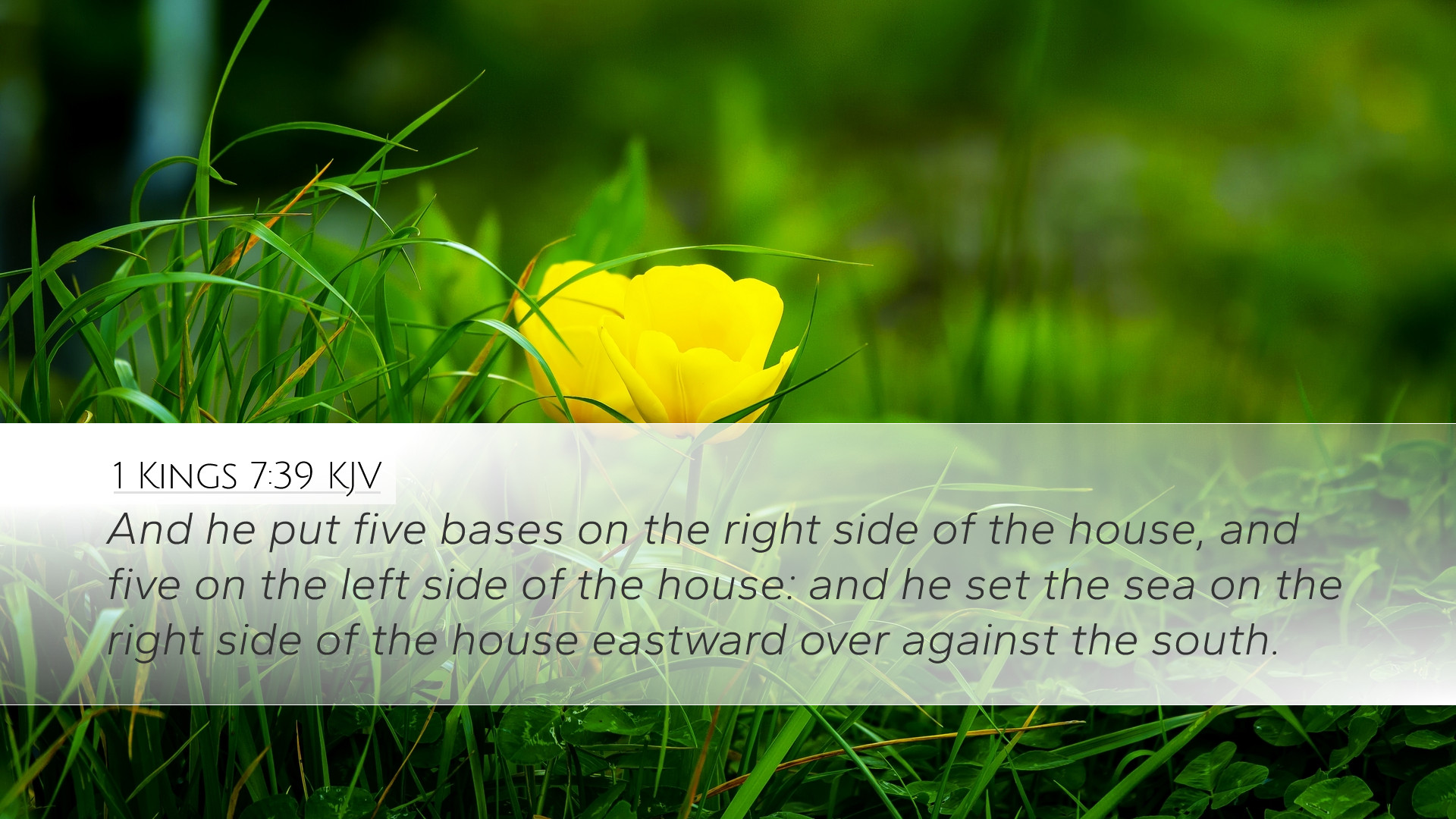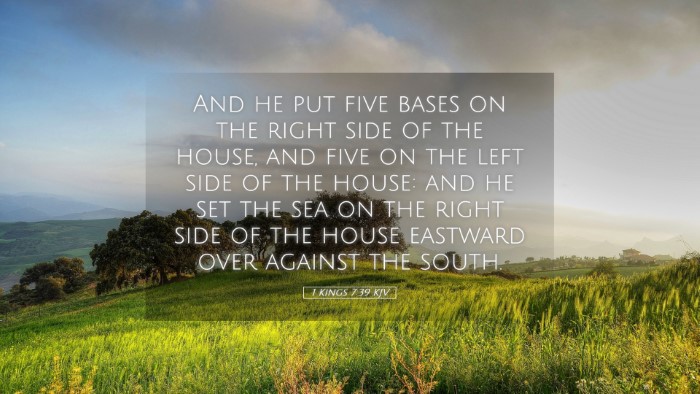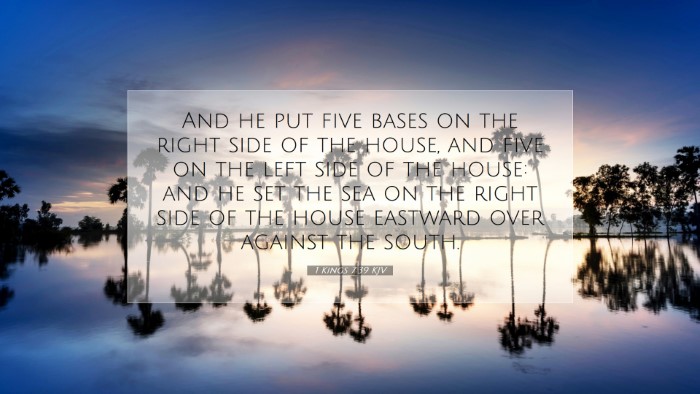Commentary on 1 Kings 7:39
Verse Context: 1 Kings 7:39 states, "And he set the sea on the right side of the east end, over against the south." This verse describes the positioning of the large basin known as "The Sea" in Solomon's temple, which was a significant feature of the temple complex.
Introduction
This verse highlights the craftsmanship and layout of Solomon's famed temple, demonstrating the glory of the Lord and the meticulous planning involved in creating a place of worship. Understanding this text is crucial for pastors, theologians, and scholars as it reflects on themes of divinity, architecture, and symbolism in Israel's worship.
Historical Background
The construction of Solomon’s temple was a monumental event in Israel’s history, representing not only the physical dwelling place for God’s presence but also a unifying endeavor for the nation of Israel. The temple, reflecting God’s holiness and majesty, was designed with specific details that conveyed theological meanings. The placement of the Sea within the temple illustrates the importance of ceremonial purity and the readiness of worshippers to enter into God’s presence.
Commentary Insights
Matthew Henry's Commentary
Henry notes that the "Sea" represents the vast, infinite mercies of God. Its placement shows that access to God is open and generous, serving as a reminder of the cleansing necessary for approaching the divine. The basin not only served as a practical vessel for the priests' purification rituals but also symbolized the abundance of God’s grace, which is essential for any worship.
Symbolism of the Sea
Henry interprets "The Sea" as an emblem of the sea of glass mentioned in Revelation 4:6, suggesting that the heavenly worship reflects the earthly setup of God's temple. This connection invites believers to consider the continuity between Old and New Testament worship, wherein the cleansing and preparation remain paramount.
Albert Barnes' Notes
Barnes emphasizes the significance of the geographical orientation in the temple's layout. The east end, traditionally associated with new beginnings, reflects the idea of hope and restoration. The positioning of the Sea, therefore, is profoundly theological, where the ‘right side’ symbolizes strength and favor from the Lord.
Concept of Purity
Furthermore, Barnes highlights how the Sea was used by the priests for purification before entering the holy place. This act underscores the important biblical principle that approaching God requires cleanliness and holiness, which serves as a precursor for the New Covenant, stating that believers must come purified by Christ’s sacrifice.
Adam Clarke's Commentary
Clarke provides insight into the architectural features of the Sea, emphasizing its size and construction from bronze, which adds both aesthetic and functional elements to the temple. He notes that the Sea was substantial enough to hold significant amounts of water, which indicates the practical needs of the priests as they performed their duties.
Practical Applications
From Clarke's perspective, the emphasis on the temple's richness in resources conveys God's extravagance in providing for His people. Clarke draws correlations between the physical temple and the spiritual lives of believers, emphasizing that just as the temple was constructed with care and beauty, so too should believers live lives that honor and glorify God in every aspect.
Theological Themes
- Holy Presence: This representation illustrates God's desire to dwell among His people.
- Cleansing and Purification: A recurrent theme in worship; the requirement for holiness is highlighted as necessary to enter God's presence.
- Divine Abundance: The specification of structures like the Sea reflects God's grace and provision for worship and community.
- Continuity of Worship: Bridging the Old and New Testament applications in how believers approach God through Christ.
Conclusion
The placement of the Sea in 1 Kings 7:39 serves as a deeply symbolic act, encapsulating critical themes of worship, holiness, and divine presence. By studying this verse through the insights provided by various public domain commentaries, we glean a richer understanding of temple worship and its implications for contemporary faith practices. The Sea stands as a reminder of the graciousness of God, calling us to purity and reverence in His presence, and continues to challenge believers today to reflect on how we approach and honor our Creator.


